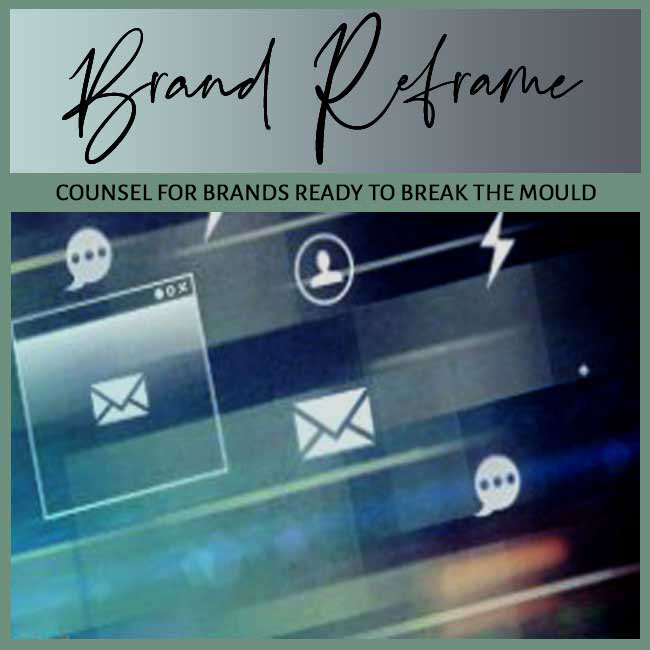
FOCUS: BRAND CLARITY ISSUES | AUDIENCE: EXPERTS WITH IGNORED BRANDS
BY: SHOBHA PONNAPPA | BRAND BREAKTHROUGH STRATEGIST | 45 YEARS | 125+ CLIENTS
I answer 6 tough questions about why clarity collapses when expert-led brands broaden their offerings and how to rebuild coherence.
In my career of 45 years as a Brand Breakthrough Strategist, I have seen many expert-led brands grow by adding services, programs, or product lines that appear synergistic but confuse their audiences. Each new offer seems logical and exciting, yet every addition pulls focus further from the core idea. Customers begin to question what the brand truly stands for. Clarity erodes not from failure, but from ambition spread too thin.
Clarity drops because growth adds complexity faster than communication systems can adapt. Each new offer demands explanation, visuals, and tone alignment that rarely evolve in sync. The result is a layered message that only insiders understand. Growth without disciplined messaging breeds confusion.
I often see expansion plans built on assumptions rather than communication architecture. Teams focus on operational rollouts while clarity work is postponed as “marketing clean-up.” By then, the confusion has compounded. Every new offering must earn its right to exist in one clear sentence.
Yes … if structure precedes storytelling. Brands like Apple or Virgin hold multiple verticals under a single philosophy, not identical products. Their audiences grasp each offer through a shared narrative lens. Clarity expands when values, not products, form the connective tissue.
I help expert brands define these connective principles before new launches occur. It means building an internal “decision filter” that checks whether new initiatives align with the brand’s unifying truth. When that system is used rigorously, variety strengthens rather than fragments. Breadth becomes coherence, not chaos.
Most likely, yes. As brands scale, they tend to design new offerings for slightly different audiences, hoping to capture more market share. The intention is right, but segmentation without storyline fractures identity. Serving everyone means standing for no one.
The solution lies in hierarchy. One brand promise, many proof points. Instead of inventing new tones for every audience, express how each offer fulfills the same central idea in different contexts. I guide clients to reframe diversity as depth, not dissonance. One core message should echo across all sub-offers.
Experts often struggle because their mastery spans multiple fields, making simplicity feel like oversimplification. Yet the audience perceives overload as indecision, not depth. The challenge is to translate complexity into elegant structure. True clarity is complexity made simple, not simplistic.
I work with expert founders to codify their thinking into a single logic model … one that organises everything under a unified worldview. Once articulated, each offer fits within a visible ecosystem rather than a scattered portfolio. That makes explaining the brand effortless and credible. Clarity grows when expertise becomes framework, not flair.
Absolutely. As offerings multiply, internal departments begin defining the brand through their own priorities … marketing pushes tone, sales chases numbers, product adds features. Each interprets clarity differently. Fragmented ownership breeds mixed signals.
To fix this, I recommend a single brand clarity charter … a living document that defines what the brand says, how it sounds, and what it never confuses. When every team aligns to that shared compass, expansion feels seamless rather than scattered. Coherence inside is the only route to clarity outside.
The first step is a ruthless clarity audit. Map every offer, tagline, and headline, then test whether they reinforce or blur your brand promise. Most leaders are shocked by how many assets contradict one another. Seeing the clutter is the first act of clarity.
Once identified, consolidate. Remove overlapping offers, merge similar products, and delete redundant copy. Clarity returns when complexity is seen, named, and simplified deliberately. Less, refined, speaks louder than more, confused.
If your brand feels like a growing house without blueprints, it’s time to pause and realign. Expansion is good only when it scales understanding alongside offerings. The goal is not more options but sharper direction. Clarity is the growth engine that keeps expansion coherent.
If you’re brand owner or manager seeking stronger brand performance, this FAQ Insight Post I wrote could interest you: “FAQs: When Your Brand Wins Consumer Hearts, but Not Sales.“
If you’re an investor seeking momentum for your portfolio brands, this FAQ Insight Post I worked on may resonate: “FAQs: When the Founder’s Decision Style Slows Brand Momentum.“

"One BIG IDEA can turn brand stagnation into unstoppable movement. Spots are limited each week ... book your breakthrough session now."
Shobha Ponnappa
More Breakthrough Ideas … Case Studies & FAQs … from the Brand Clarity Issues Category
Case Studies
FAQ Insights
Smart insights, real-world frameworks, and idea-driven clarity – designed to help brands move.
Get my fortnightly Brand Reframe newsletter. Smart insights, distilled thinking, and focused momentum to help your brand lead.

Get my free AI strategy guide. Smart prompts, sharper briefs, and practical ways to make AI support your brand momentum.

Just fill in the form to join. Get my newsletter and the guide shown alongside, all with several game-changing tips.